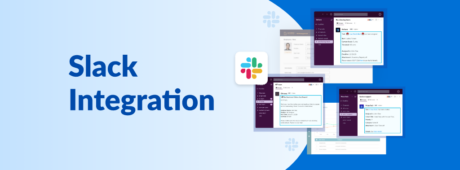Beyond the Illusion: The True Cost of Per-Seat Pricing
Published: November 17, 2023

Per-seat pricing is a software licensing model that charges businesses a fixed fee for each user with access to the software. While this model can be simple and predictable, it can have consequences for businesses beyond the cost of the software.
The Invisible Wall
Per-seat pricing inherently limits the democratization of software within an organization. By tying costs to the number of individual users, this pricing model creates a situation where decision-makers must be selective about who gets access to the software. This is not just a financial concern; it also leads to operational inefficiencies. Access to the software becomes a bottleneck, hampering the free flow of information and reducing the organization’s collective ability to make informed decisions.
The restrictive nature of per-seat pricing inhibits cross-functional collaboration and contributes to the formation of information silos. Key personnel who could benefit from the software’s capabilities are often left out, causing a decline in productivity and innovation. Therefore, the very pricing model works against modern business philosophies that champion inclusivity, shared knowledge and agile response to challenges.
This pricing model fails to consider the nuanced ways businesses grow and evolve. Companies may expand departments selectively or bring in temporary staff for specific projects, without a corresponding linear increase in software utility. In such scenarios, the rigidity of per-seat pricing imposes financial constraints that can stifle flexibility and innovation. It hinders a company’s ability to scale effectively, attaching a punitive cost to every facet of business expansion and thus undermines the very promise of software as a service (SaaS): to act as a lever for business growth and efficiency.
Moreover, companies often resort to dubious workarounds to avoid these costs, such as sharing login credentials among multiple employees. This practice, apart from being a clear security risk, can also lead to compliance issues and inefficiencies, further eroding the actual value derived from the software.
Shifting From Per-User to Per-Usage
Low-code platforms are a new generation of software development tools that allow businesses to build and deploy custom software applications without writing code. Low-code platforms offer several advantages over traditional software development methods, including faster time, reduced costs and increased agility.
All per-seat pricing roadblocks are amplified with low-code platforms-as-a-service (PaaS). With traditional development, the software owner doesn’t pay anyone per-seat fees for the application they create, yet most PaaS vendors continue to require per-seat pricing.
According to a study by Gartner, 70% of businesses prefer usage-based pricing over per-seat pricing for PaaS applications. The study also found that businesses that switched to usage-based pricing saved an average of 20% on their PaaS costs.
Another study conducted by Forrester Research found that 80% of businesses said they would be more likely to adopt a PaaS application if it was priced per usage. The study also found that businesses that switched to usage-based pricing were more likely to report that they were satisfied with their PaaS application.
Enter Caspio: A New Era in Software Pricing
Caspio is a low-code platform that has been offering usage-based pricing for over 20 years. Since 2000, Caspio’s usage-based pricing model has been fair and transparent. Businesses only pay for the resources they use, such as the number of applications, data records and file storage. There are no per-seat costs with Caspio, making it particularly appropriate for large-scale applications with thousands of users.
Caspio’s usage-based pricing model, trusted by over 100,000 companies across 100 countries, has propelled the company to become a leader in the low-code platform market.
Reimagining Software Economics
The transition from per-seat to usage-based pricing is not merely a tweak in how businesses are billed; it represents a fundamental shift in the software economic landscape. The older per-seat pricing model was predicated on a fixed concept of software value, rooted in an era where software was bought in boxes and installed on individual machines. Today, in the age of cloud computing and SaaS, the dynamic nature of business demands a pricing model that is equally dynamic.
Usage-based pricing reflects the evolving realities of modern business — diverse, agile and driven by data. It aligns cost directly with value, creating a fair environment where businesses can scale operations, innovate and adapt to market changes without being handicapped by their software costs. This paradigm shift sets the stage for a more equitable and effective way to approach software investments, rewarding businesses for how smartly they use the software rather than how many people are using it.
Per-seat pricing is a hidden tax that’s hampering business growth. Businesses that are serious about growing need to ditch per-seat pricing and switch to alternatives that employ usage-based pricing. It’s the only way to ensure that they’re getting the most out of their software investment.
If your application platform employs seat-based pricing, we invite you to speak with us and see how usage-based pricing can be a game changer for your business.
















